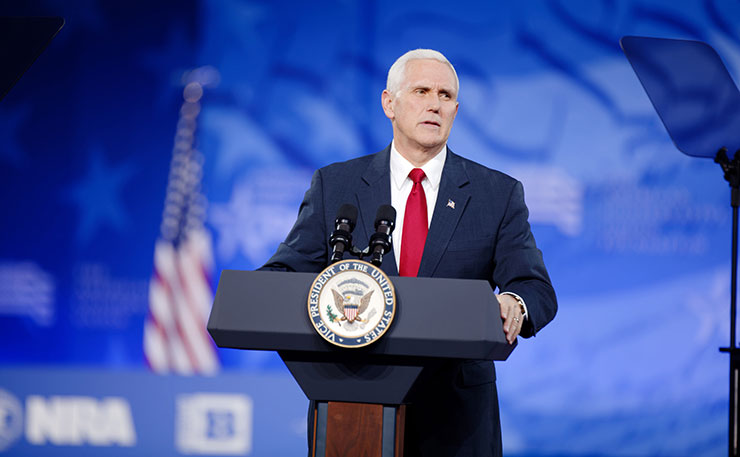Peace suddenly looks almost possible on the Korean peninsular, but America looks unlikely to fall into step, and Australia will almost surely follow their lead. Max Atkinson explains.
Recent events on the Korean Peninsula call for a more independent foreign policy. This is despite the Prime Minister’s assertion that Australia is an appendage of the US and will go wherever Donald Trump – the most quixotic of American presidents – takes us.
It is also a matter of urgency given Trump’s insistence that the Democratic People’s Republic of Korea (DPRK) be forced to give up its nuclear deterrent, if necessary by a pre-emptive US attack. This is despite the North’s resolve, reflecting its own history, that it will never do so.
Moon Jae-in, the new South Korean President, has seized the olive branch offered by Kim Jong-un and moved swiftly to fulfil election promises based on a life-long commitment to peace and reconciliation. After two years of silence, the two Koreas have surprised the world and defied the US by using the Winter Olympics to show that, despite the rhetoric and Trump’s aversion to talks, an accord is possible and worth pursuing.

The symbolism of competing under a specially designed unifying flag has been dramatic and effective. This was followed by a ground-breaking invitation, hand-delivered by Kim Jong-un’s sister, for President Moon to visit Pyongyang for the first meeting between the two leaders since 2007.
Meanwhile, US Vice-President Mike Pence, seated just below her at the opening ceremony, had his own symbolism. He brought with him the father of Otto Warmbier, the US student who died shortly after release from a North Korean prison. It would remind everyone that this regime – a family dynasty backed by a military dictatorship – is one of the most inhuman the world has known.
The underlying message, also used to justify the Iraq War, is clear: although long-settled principles of international law prohibit the use of force other than in response to an imminent attack, the cruelty of this regime’s leaders will justify a pre-emptive strike if it is in the interests of the US, even if it means the deaths of thousands of innocent Koreans from both North and South.
In Realpolitik this is called collateral damage – the cost of ridding the world of an evil regime.
Accordingly, Pence also came with an ultimatum: “The United States of America will soon unveil the toughest and most aggressive round of economic sanctions on North Korea ever,” he said en route in Tokyo after a meeting with Japanese Prime Minister Shinzo Abe. He offered no specifics, only that the aim was to ensure “complete, verifiable and irreversible denuclearization”.
Despite these events, and a real prospect the two Koreas might, after 70 years, sign a peace treaty, the US has long said it will not join talks until the North gives up its nuclear deterrent. Pence had, in fact, reaffirmed this on his Tokyo stopover, when he assured Shinzo Abe the US would “continue to isolate North Korea until it abandons its nuclear and ballistic missile program once and for all”.

But things got confused on the way home. In an interview with the Washington Post after leaving South Korea, Pence sought to minimise the rift with an ally by saying the US was ready to meet with the North – even indicating talks without preconditions – which just happened to echo Secretary of State Rex Tillerson’s view until recently rebuked by Trump.
On Wednesday, 14th February a puzzled Fran Kelly used the ABC’s Breakfast Show to clarify this with Foreign Minister Julie Bishop, who had spoken with Tillerson the previous day.
Bishop explained that the US position had not changed:
“They’ll be prepared to talk with North Korea but … they think that the diplomatic and economic pressure is working … and so Australia remains committed to this global effort of maximum diplomatic and economic pressure on North Korea to bring them back to the negotiating table…. The United States has always been prepared to talk to North Korea but actually negotiating is another matter.”
What, then, is the difference between talking and negotiating? This must be inferred from the pre-condition that North Korea first abandon its nuclear missile programs.
It means the US will not address the North’s security concerns by discussing the twice-yearly invasion exercises.
It means the US will not negotiate withdrawal of the 28,000 US military personnel in the South, or the US bases and weapons systems installed there.
Nor will it discuss trade embargoes which have for decades stifled the North’s development and served to reinforce the authority of the regime among its own citizens.
Nor will it discuss a wider regional de-nuclearisation extending beyond the Korean peninsula.
This makes no sense. When North Korea invaded the South in 1950 it acted to unite a nation which was occupied by Japan for 35 years, and divided at the end of WW2 because the North was liberated by Soviet troops and the South by the US.

This was the height of the Cold War, and President Truman saw the USSR and communism as a global threat and the real enemy in the ensuing civil war. It is why, after the rollback of DPRK forces, he made a fateful decision to invade the North to force unification under the controversial Syngman Rhee, installed as ruler in the South by the US military command.
History records the North paid a terrible price. Dean Rusk, who served under Truman and later became Secretary of State, said the US bombed “everything that moved in North Korea, every brick standing on top of another”. General Curtis Le May boasted that his Strategic Air Command had “killed off … 20% of the population”. According to eminent Chicago historian Professor Bruce Cumings, “hardly any Americans know we carpet-bombed the North for three years with next to no concern for civilian casualties”. (The National Interest, August 12, 2017).
It is not hard to understand the North’s commitment to a nuclear defence capability. What, then, is the reasoning behind the US refusal to negotiate?
Christopher Hill, former Assistant US Secretary of State and chief architect of the 2005 accord with the North, is an outspoken critic of Trump, but defends this stance. In an article in the Project Syndicate in June, 2017 he argued that “without joint exercises, a military alliance becomes weak and hollow”, citing Germany’s invasion of Poland in 1939. In the same essay he claimed (without supporting evidence) that North Korea “does not want only to defend itself; it wants to set the stage for an invasion of its own”.
If this is the best such an experienced diplomat and scholar can offer we need to ask whether, given the above history, the refusal to negotiate is intended to appease a domestic audience and preserve an implausible image of American moral leadership.
The flaw behind this stance is Trump’s attempt to argue from US interests rather than the values of international law, but that’s another story.
Meanwhile, the challenge facing South Korean President Moon Jae-in, a former human rights lawyer, is huge.
It will be even more demanding as the noose from the Robert Mueller Special Counsel investigation tightens, and President Trump seeks to distract the public from an impeachment debate by re-asserting his self-image as a bold and decisive leader.
Donate To New Matilda
New Matilda is a small, independent media outlet. We survive through reader contributions, and never losing a lawsuit. If you got something from this article, giving something back helps us to continue speaking truth to power. Every little bit counts.




